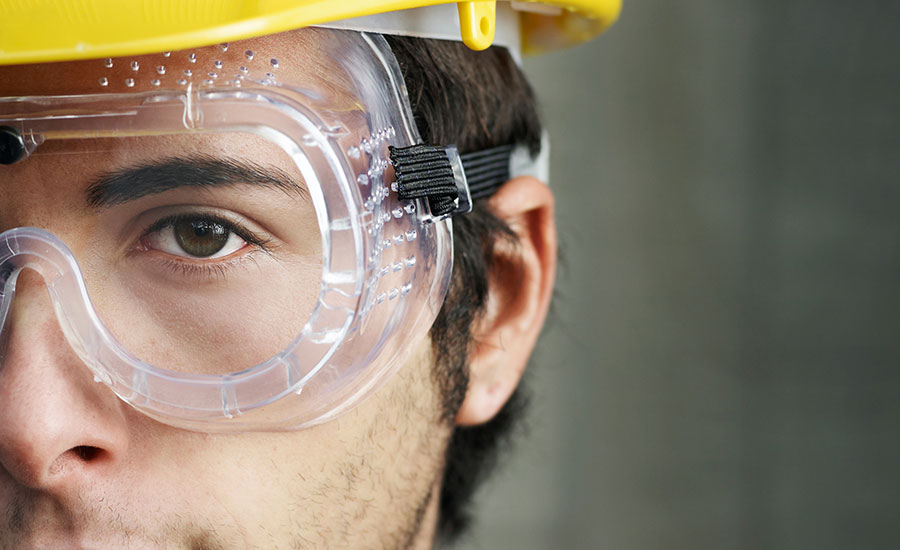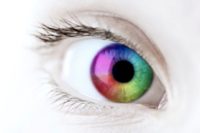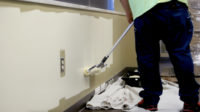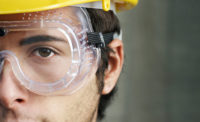In the blink of an eye…

According to the American Academy of Ophthalmology, an estimated 90 percent of eye injuries are preventable with the use of proper safety eyewear. Even a minor injury to the cornea—like that from a small particle of dust or debris—can be painful and become a life-long issue, so take the extra precaution and always protect the eyes. If the eye is injured, seek emergency medical help immediately.
Dangers at Home
When we think of eye protection, we tend to think of people wearing hardhats and lab coats. We often forget that even at home, we might find ourselves dealing with similar threats to our eyes. Dangerous chemicals that could burn or splash the eyes aren’t restricted to chemical laboratories. They’re also in our garages and under our kitchen sinks. Debris and other air-borne irritants are present at home, too, whether one is doing a home construction project or working in the yard. The debris from a lawnmower or “weed wacker,” for example, can be moving at high speeds and provide no time to react. Some sports also put the eyes at risk of injury from foreign objects moving at high speeds.
Effective Eyewear
The best ways to prevent injury to the eye is to always wear the appropriate eye protection. The Bureau of Labor Statistics reports that approximately three out of every five workers injured were either not wearing eye protection at the time of the accident or wearing the wrong kind of eye protection for the job. To be effective, eyewear must fit properly and be effectively designed to protect the eyes based on the activity being performed. The Occupational Safety Health Administration (OSHA) has standards that require employers to provide their workers with the appropriate eye protection.
When to Wear Protective Eyewear
According to these standards, you (or anyone who is watching you work) should always wear properly fitted eye protective gear, such as safety glasses with side protection/shields, when:
- Doing work that may produce particles, slivers, or dust from materials like wood, metal, plastic, cement, and drywall
- Hammering, sanding, grinding, or doing masonry work
- Working with power tools
- Working with chemicals,including common household chemicals like ammonia, oven cleaners, and bleach
- Using a lawnmower, riding mower, or other motorized gardening devices like string trimmers (also called “weed wacker” or “weed whip”)
- Working with wet or powdered cement
- Welding (which requires extra protection like a welding mask or helmet from sparks and UV radiation)
- “Jumping” the battery of a motor vehicle
- Being a bystander to any of the above
Sports
It’s also recommended that you protect your eyes from injury when participating in certain sports, including:
- Indoor racket sports
- Paintball
- Baseball
- Basketball
- Hockey
- Cycling
- Riding a being a passenger on a motorcycle
Sun
The eyes also need to be protected from prolonged sun exposure, so have sunglasses with UV protection at hand. If you’re putting on sunscreen, you should also be wearing sunglasses with UV protection.
Vision is a gift. Make the extra effort to protect it.
Source: U.S. Depart of Health and Human Services
Looking for a reprint of this article?
From high-res PDFs to custom plaques, order your copy today!








